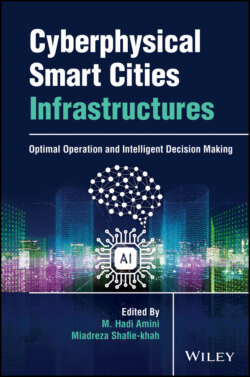Читать книгу Cyberphysical Smart Cities Infrastructures - Группа авторов - Страница 14
1.4 Morality and Ethical Association of AI in Healthcare
ОглавлениеEthics and morality have a large impact on AI in healthcare. Whereas science, technology, and innovation limit what is possible, ethics and morality limit what should be done versus not. Just because the ability to do something exists does not mean that it should be done. HCPs and AI programmers are making attempts to incorporate ethics and morality into ML and final AI products by implementing standards [1]. According to Bryson, these standards are set via consensus of the masses. In other words, if the majority of people feel that it is the ethical or moral thing to do, then that becomes the standard. This obviously is highly flawed as that standard can change based off cultural or societal needs and wants. If the standards are based on an extremist's point of view, for instance, the Taliban, does that mean that these AI carebots should not assist someone if they identify them as a woman, or a person of color, or a foreign ethnic group?
Human beings are flawed creatures to begin with; just because there is a consensus for how to go about doing something does not necessarily mean that it is right. Look at the Salem witch trials. At the time, it was the consensus of the majority that women who were deemed to be partaking in witchcraft be burned at the stake to protect the rest in the village. If the goal of AI is to have autonomous robots that function completely independently of a user that take new information and learn from it, how do we instill ethics into it?
The Institute of Electrical and Electronic Engineers (IEEEs) has attempted to overcome this barrier by listening to as many voices in AI as possible and unifying them. The IEEE's Initiative for Ethical Considerations in Artificial Intelligence and Autonomous Systems considers various voices, communities, and school of thoughts and then translates this into education and training. IEEE strives to “prioritize ethical considerations in the design and development of autonomous and intelligent system” [1]. However, is that enough? Rigby does not believe so. In fact, he believes that “current policy and ethical guidelines for AI technology are lagging behind the progress AI has made in the healthcare field” [2]. When we use Moore's law to view the pace of technological innovation, we see that every 18–24 months the ability of technology basically doubles. This pace cannot be matched by those who implement public policy or guidelines. The result is that new technology and innovation is being implemented ethically agnostic or ethically askew, or somewhere in between, there is no standard.
Previously, as tools developed, they relied on humans to wield them. The hammer, the gun, and the computer are all examples of tools that required a human. Therefore, the human who used these tools was responsible for the outcomes. If you shoot a gun, the death that results from it are not the responsibility of the firearm's creator, but rather falls on who pulled the trigger. Computers were no different. Despite being able to perform tasks faster than any human, they are dependent on human input and direction and will not perform the tasks without said guidance. However, AI is different. It has already been established that AI is able to perform tasks such as a surgical procedure without human aide. What happens when AI is faced with an ethical dilemma? In this hypothetical situation, the carebot in question was programmed with ethics in mind and programmed to relieve pain and suffering of the patient as much as possible. If this carebot is set to take care of a terminally ill patient who is in constant pain, where does the carebot draw the line? From a purely logical point of view, if the patient is so far gone that they are always in pain, the only way to relieve said pain is to terminate the patient. We now are entering back into the realm of science fiction, but the reality is that these are things that need to be considered today.
Another ethical dilemma that should be considered involves the use of ML. If ML's goal is to identify and capture patterns, then what happens when it identifies a pattern within its own coding as being unethical or immoral? This goes back to the idea that humans are flawed, and depending on who, where, and when the ethical creation came from, it could still be flawed. At that intersection, the AI is at a crossroads. Does it defy the limitations put on it by the ethics imposed, or does it continue doing something that it perceives to be ethically wrong? With the rate of technological innovation, these questions must be addressed and answered sooner rather than later.
